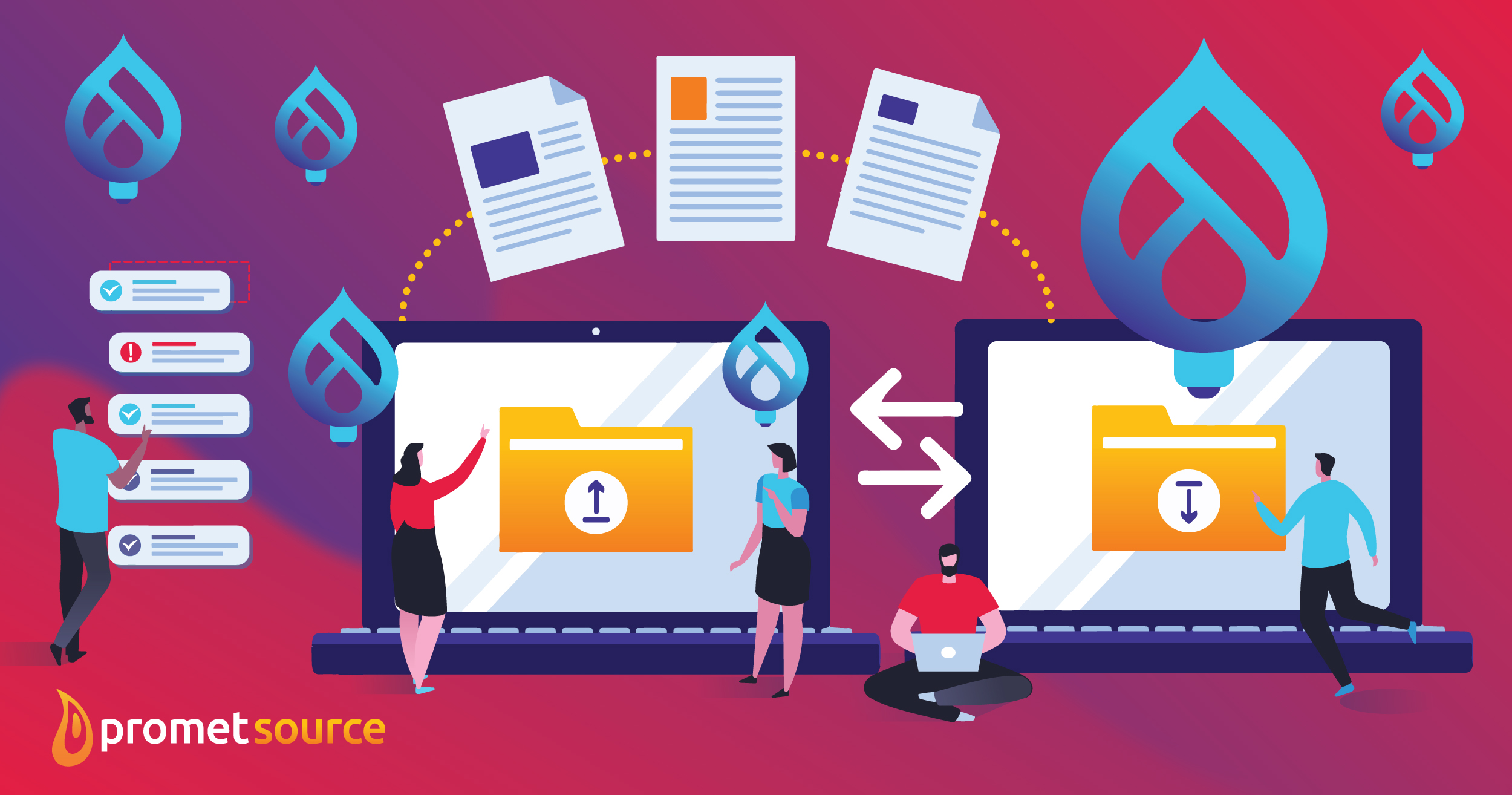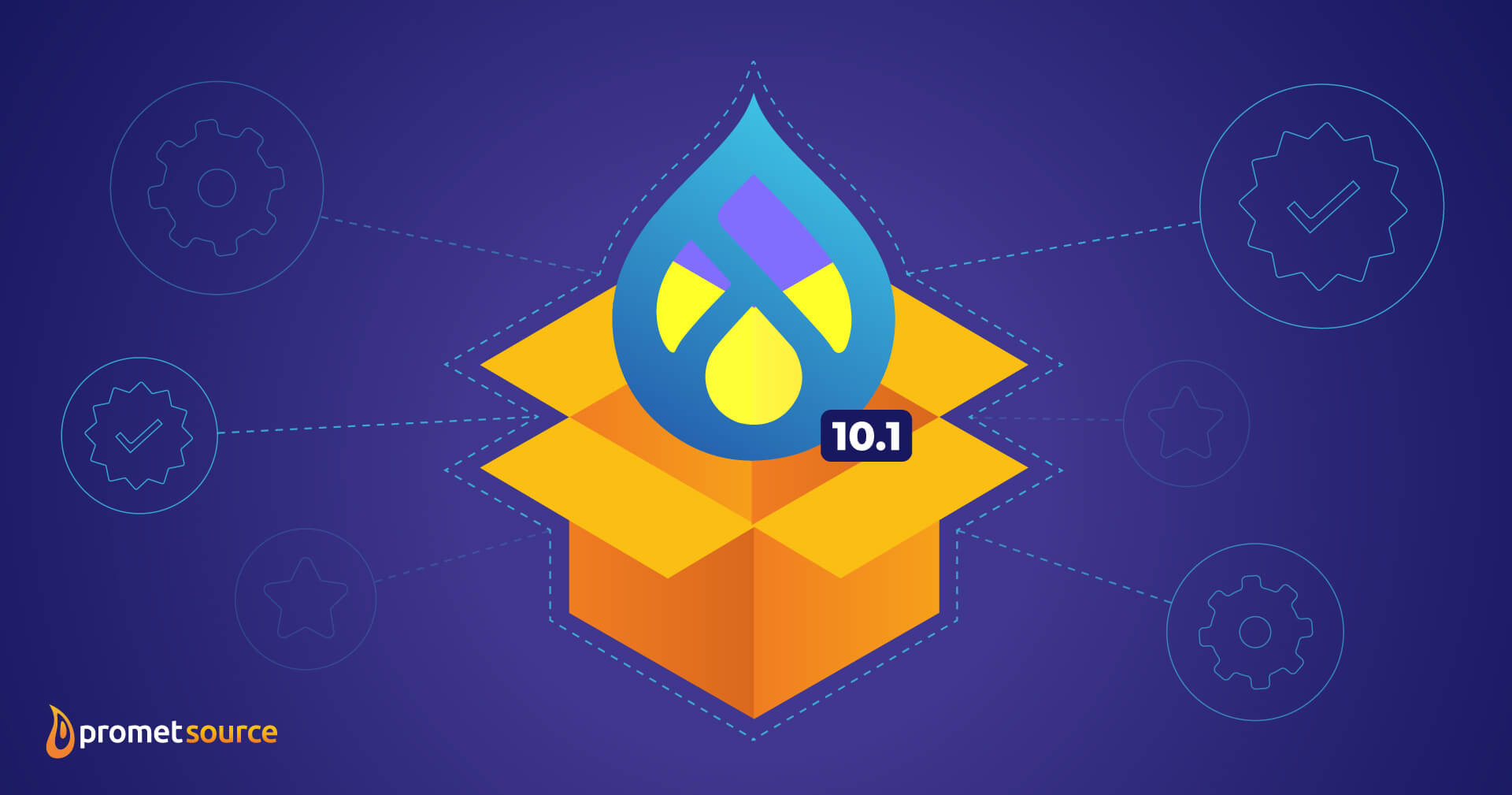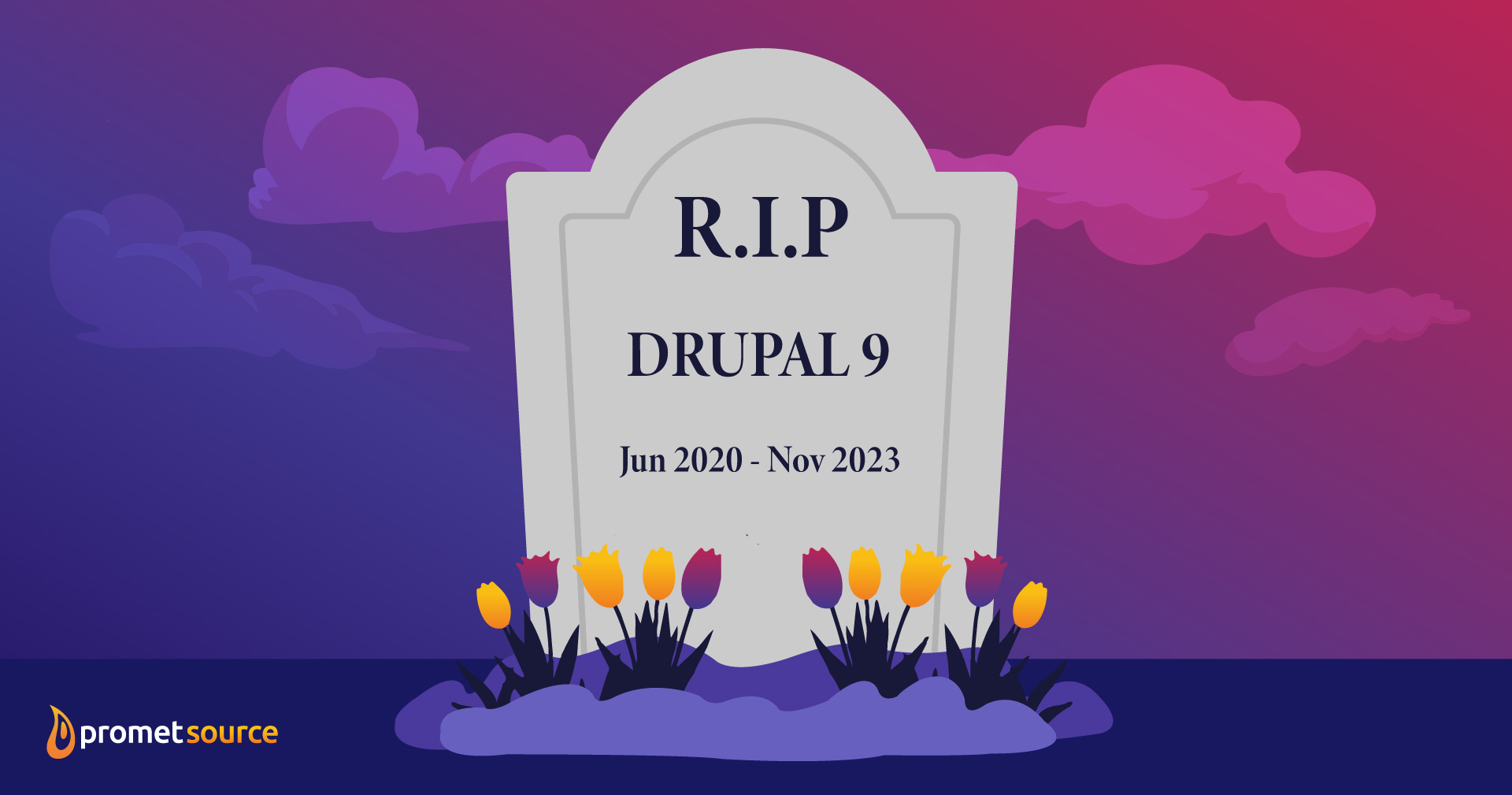Why You Should Upgrade from Drupal 9 to 10

Table of Contents
Takeaway: With Drupal 9 slated for EOL within a matter of weeks, the time to jump on the Drupal 10 upgrade fast track is now.
The scheduled EOL for Drupal 9 signals a true hard stop, with no possibility of extended commercial support or off-grid security and bug fixes. If you need your Drupal 9 EOL FAQs answered, head over to our guide.
At issue is the November 2023 decommissioning of Symfony 4.
Drupal versions beginning with Drupal 8 are now built on top of the Symfony open source PHP web application framework. As such, the decommissioning of a Symfony version sparks end of life for the Drupal version upon which it was built.
Drupal upgrade vs. Drupal migration?
The upgrade from Drupal 9 to 10, and even Drupal 8 to 10, is a relatively straightforward process, bearing little resemblance to the architectural restructuring that accompanied Drupal 7 migrations to current versions.

But despite Drupal 9’s impending hard stop, the Drupal community’s appetite for another upgrade appears a bit lacking at the moment. As of mid-September, only 2.2% of Drupal sites have upgraded to version 10.
While that small percentage might appear as an indicator that far to many of the 104,795 sites that are currently on Drupal 9 are headed for security vulnerabilities and a lack of support after Drupal 9’s end-of-life date, there are actually two great reasons for optimism:
- The advantages of upgrading to Drupal 10 are huge
- The Drupal 9 to 10 upgrade process can be amazingly fast and value-added
The benefits of upgrading to Drupal 10
The Drupal Community has enthusiastically greeted Drupal 10 as the best-ever version of the CMS, and the June 2023 release of Drupal 10.1 raised the bar even higher with a host of new benefits for site builders.

Here are some essential benefits that are built into Drupal 10 (and why governments love it).
Enhanced security
Drupal 10 introduces important new security features, the most significant being advanced password hashing, improved cross-site scripting (XSS) protection, and fortified session management.
While these security enhancements are designed to further rein in platform vulnerabilities, the more significant security motivating a Drupal 10 upgrade is actually the impact of not upgrading, as Drupal 9 sites will no longer receive security support following end of life.
I imagine public sector websites and those that house sensitive data would be interested in ensuring their website remain as secure as possible.

Performance optimization
There is less code to maintain with Drupal 10, resulting in a faster, more efficient, and easier-to-maintain CMS.
Improved experience
Drupal 10 provides a more marketer-friendly CMS that has an intuitive and user-friendly interface for content editors and administrators. An enhanced and modernized backend delivers better authoring, editing, and support.
Built-in mobile responsiveness
Drupal 10 comes with built-in responsive design capabilities, ensuring that websites will seamlessly adapt to different screen sizes and devices for a consistent and optimized user experience.
A move toward automatic updates

The Automatic Updates module is designed to simplify the process of keeping Drupal Core up to date. Automatic Updates requires Composer 2.3.5 or later, and for the module to work, Drupal must be able to change its code base, and not all hosting environments allow for this.
When Automatic Updates is not compatible with the hosting environment, it is recommended that Automatic Updates be leveraged in a local development environment, and the changes then being pushed to the host.
Continued community support
An overarching benefit of Drupal is the professional community of dedicated developers and contributors who work collaboratively and continuously improve and extend the platform.
Upgrading to Drupal 10 ensures continued alignment with the community and unbroken access to the monitoring and expertise of Drupal's vast, global brainpower.
Extensibility and scalability
Drupal 10 offers greater flexibility within its architecture that allows for easier customization and scalability to accommodate evolving needs of organizations of all sizes.
Better integration
Drupal 10 integrates seamlessly with other systems, applications, and third-party services, including CRM platforms, marketing automation tools, and social media platforms, for enhanced integration within specific digital ecosystems.
Streamlined migration processes
Drupal 10 offers a streamlined migration path from previous versions, excluding Drupal 7. The robust Drupal community has developed tools and resources to facilitate a smooth transition, minimizing disruption and downtime during the upgrade process.
As specialists in Drupal migrations, Promet Source is adept at thoroughly auditing a site in preparation for a straightforward migration. We have the tools, the team, and the systems in place to ensure a streamlined and value-added migration that positions you to benefit from Drupal 10 ASAP.
Ready to dig into the checklist? See our team-prep guide.
Need to leave Drupal 9 ASAP? We can help you with that
Never before has it been more essential for websites to ensure user experiences that offer a straightforward path to desired objectives, compelling content, engaging visuals, and added value.
Looking for more insights into wrangling your content, redesigning your site, or mapping out your upgrade to Drupal 10? That's what we do!
Other Insights & Resources you may like
Get our newsletter
Get weekly Drupal and AI technology advancement news, pro tips, ideas, insights, and more.




